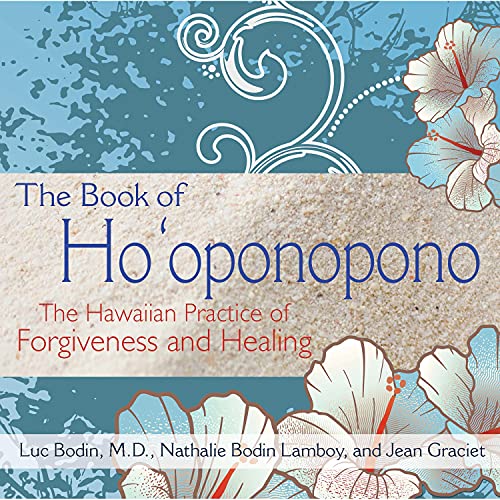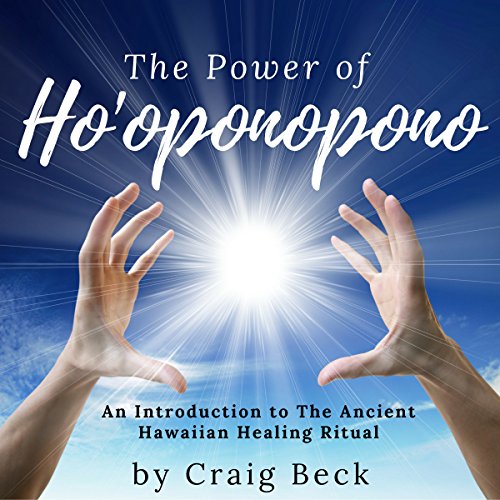Have you ever heard of Ho’oponopono? It’s a fascinating ancient healing practice that stems from Hawaiian culture. This traditional method has been used for centuries to restore harmony and balance in relationships, both with others and with oneself. If you’re interested in exploring this unique approach to healing, keep reading to learn more about Ho’oponopono and how it can benefit your life.
Ho’oponopono is deeply rooted in the beliefs and values of Hawaiian culture. It is based on the understanding that we are all interconnected and that our actions have consequences that ripple through the web of connections we share with others. By taking responsibility for our thoughts, actions, and emotions, Ho’oponopono seeks to bring about healing, forgiveness, and reconciliation. Through a series of rituals and practices, individuals are guided to confront and resolve conflicts, restore harmony, and cultivate a sense of peace within themselves and their relationships.
In the upcoming article, you’ll delve even deeper into the principles and practices of Ho’oponopono. You’ll learn about the four key phrases that form the foundation of this healing practice and how they can help you cleanse and release negative energies. You’ll also discover the power of forgiveness and how it plays a central role in Ho’oponopono. So, if you’re ready to explore this ancient healing practice from Hawaiian culture, stay tuned for the full article.

Introduction
Welcome to this article on understanding Ho’oponopono, the ancient healing practice of Hawaiian culture. In this article, we will explore the definition, origins, key concepts, process, and methodologies of Ho’oponopono. We will also discuss the benefits of practicing Ho’oponopono, the significance of mantras and prayers, the cultural respect involved in its practice, and its relevance in the modern world. Additionally, we will address criticism and controversies surrounding Ho’oponopono, scientific research that validates its effectiveness, tips for incorporating it into daily life, and real-life stories of its impact on individuals and communities.
Ho’oponopono: Definition and Origins
Understanding the Meaning of Ho’oponopono
Ho’oponopono is a traditional Hawaiian practice that focuses on reconciliation, resolution, and forgiveness. The word itself can be broken down into “ho’o” meaning to make or cause, and “ponopono” meaning to put things in order or balance. Ho’oponopono seeks to restore harmony and balance within oneself, relationships, and communities.
Ancient Origins of Ho’oponopono
Ho’oponopono has deep roots in Hawaiian culture, dating back centuries. It was traditionally used to address conflicts and restore harmony within families and communities. The practice was led by a respected elder or kahuna, who guided the participants through the process of reconciliation and forgiveness.
Importance of Ho’oponopono in Hawaiian Culture
Ho’oponopono is not just a therapeutic practice but an integral part of the Hawaiian culture. It embodies the values of responsibility, respect, and compassion. By practicing Ho’oponopono, individuals not only heal themselves but also contribute to the overall well-being of their communities.

Four Key Concepts of Ho’oponopono
1. Harmony and Balance
At the core of Ho’oponopono is the belief in restoring harmony and balance within oneself and one’s relationships. It recognizes that disharmony and imbalance can manifest in various forms of suffering, including physical, emotional, and mental.
2. Responsibility
Ho’oponopono emphasizes personal responsibility for one’s actions, thoughts, and emotions. By taking ownership of one’s role in conflicts and challenges, individuals can actively participate in the healing process and bring about positive change.
3. Forgiveness
Forgiveness is a central aspect of Ho’oponopono. It involves letting go of resentments, grudges, and past hurts. Through forgiveness, individuals can release emotional baggage and create space for healing and growth.
4. Reconciliation
Ho’oponopono seeks reconciliation among individuals. It encourages open communication, the acknowledgment of wrongdoing, and the restoration of trust. Reconciliation fosters empathy, understanding, and a sense of unity within families and communities.
Ho’oponopono Process and Methodologies
Traditional Ho’oponopono Rituals
In traditional Ho’oponopono rituals, a respected elder or kahuna facilitates the process. Participants come together in a sacred space, where they openly share their feelings, perspectives, and grievances. The kahuna guides the group through a structured process of forgiveness, reconciliation, and setting intentions for moving forward.
Modern Applications and Adaptations
In the modern world, Ho’oponopono has evolved and been adapted to different contexts. It can now be practiced individually or in group settings, and the guidance of a kahuna is not always necessary. Modern adaptations often incorporate elements of psychotherapy, mindfulness, and energy healing.
Steps Involved in Ho’oponopono Practice
While the specific steps may vary depending on the approach and context, the general process of Ho’oponopono involves the following:
- Recognition: Acknowledge any disharmony or imbalance within yourself or your relationships.
- Acceptance: Take responsibility for your part in the conflict or challenge.
- Forgiveness: Release any resentments, grudges, or negative emotions.
- Reconciliation: Openly communicate, listen, and seek understanding from others involved.
- Healing and Growth: Set intentions and commit to ongoing personal and collective healing.

Benefits of Practicing Ho’oponopono
Emotional Healing and Stress Reduction
Ho’oponopono offers a powerful framework for emotional healing and stress reduction. By addressing underlying conflicts and grievances, individuals can experience a sense of release and emotional liberation. This can lead to reduced stress, anxiety, and improved overall well-being.
Improved Relationships and Community Bonds
Through the practice of forgiveness and reconciliation, Ho’oponopono strengthens relationships and fosters a sense of unity within families and communities. It promotes open communication, empathy, understanding, and the cultivation of healthy boundaries.
Transformative Personal Growth
Ho’oponopono provides a path for personal growth and transformation. By taking responsibility for one’s actions and emotions, individuals can develop self-awareness, self-reflection, and a deeper understanding of themselves and others. This leads to personal empowerment and the ability to create positive change.
Understanding Ho’oponopono Mantras and Prayers
Popular Mantras and Their Meanings
Mantras are sacred words or phrases used in Ho’oponopono to focus the mind and invoke healing and transformation. Some popular Ho’oponopono mantras include:
- “I’m sorry, please forgive me, thank you, I love you.” This mantra encapsulates the essence of Ho’oponopono, acknowledging responsibility and expressing forgiveness, gratitude, and love.
- “Peace begins with me.” This mantra emphasizes personal responsibility for peace within oneself and in the world.
Sacred Prayers in Ho’oponopono
Prayers are an integral part of Ho’oponopono, connecting individuals to their spiritual roots and higher power. They serve as a way to express gratitude, seek forgiveness, and invoke healing. Sacred prayers in Ho’oponopono may vary, but they often evoke a sense of humility, reverence, and connection to the divine.
Chanting and Meditation Techniques
Chanting and meditation are common practices in Ho’oponopono. They help individuals to quiet the mind, enter a state of deep relaxation, and connect with their inner selves and the healing energies of the universe. Chanting mantras or focusing on specific words or phrases can aid in concentration and intention setting.

Cultural Significance and Respect in Ho’oponopono
Honoring the Ancestors and Native Hawaiian Traditions
In practicing Ho’oponopono, it is essential to honor the ancestors and respect the rich cultural traditions of Native Hawaiians. Recognizing the wisdom passed down through generations and understanding the historical context of Ho’oponopono is crucial for its authentic practice.
Maintaining Sensitivity and Cultural Appropriation
As with any indigenous practice, it is essential to approach Ho’oponopono with sensitivity and respect. Cultural appropriation of Ho’oponopono, using it without proper understanding or permission, is disrespectful and diminishes its sacredness. Non-Hawaiians should seek guidance from knowledgeable practitioners and engage in the practice with humility.
Collaborative Approach and Community Involvement
Ho’oponopono is a community-based practice that emphasizes collaboration and shared responsibility. It is not solely an individualistic endeavor but a collective effort to restore harmony within families and communities. Inclusion, open dialogue, and community involvement are vital aspects of Ho’oponopono.
Ho’oponopono in the Modern World
Integration into Western Psychotherapy
Ho’oponopono has gained recognition and integration into Western psychotherapy approaches. Mental health professionals have recognized the value of its principles, such as forgiveness, responsibility, and reconciliation, in promoting emotional well-being and healing.
Corporate and Workplace Applications
Ho’oponopono has also found its way into corporate and workplace environments. Organizations have begun incorporating its principles and practices to improve team dynamics, resolve conflicts, and foster healthy relationships among employees.
Healing and Wellness Retreats
In response to the growing interest in Ho’oponopono, healing and wellness retreats dedicated to this practice have emerged. These retreats offer individuals an immersive experience of Ho’oponopono, allowing them to learn directly from skilled practitioners and create a transformative healing journey.

Criticism and Controversies Surrounding Ho’oponopono
Cultural Appropriation Concerns
Critics argue that the commercialization and popularization of Ho’oponopono by non-Hawaiians can lead to the cultural appropriation of Native Hawaiian practices. They emphasize the importance of honoring the cultural origins and seeking guidance from indigenous practitioners.
Misinterpretation and Misuse of Ho’oponopono
There are instances of Ho’oponopono being misrepresented or misused, leading to misunderstandings about its true essence and intentions. It is crucial to approach Ho’oponopono with authenticity, respect, and a deep understanding of its cultural and historical significance.
Clash with Western Scientific Approaches
Some skeptics question the efficacy of Ho’oponopono, as it may not align with Western scientific approaches or empirical evidence. While science may not fully understand the mechanisms behind Ho’oponopono, its transformative effects on individuals and communities cannot be dismissed.
Scientific Research and Validating Ho’oponopono
Exploring the Effects of Ho’oponopono
Scientific research on Ho’oponopono is still emerging, but early studies suggest its effectiveness in improving emotional well-being, reducing stress, and resolving conflicts. Research is needed to further validate its transformative impact on individuals and communities.
Studies on Forgiveness and Emotional Well-being
Numerous studies have shown the positive effects of forgiveness on emotional well-being and psychological health. The principles of forgiveness in Ho’oponopono align with these findings, highlighting the potential for healing and personal growth through the practice.
Neuroscientific Perspectives on Ho’oponopono
Neuroscientific research has explored the impact of meditation and mindfulness practices on the brain. While specific studies on Ho’oponopono are limited, the principles of mindfulness, self-awareness, and forgiveness within Ho’oponopono resonate with the findings of neuroscientific research.
Tips for Incorporating Ho’oponopono in Daily Life
Practical Strategies for Self-Forgiveness
Incorporating Ho’oponopono into daily life starts with self-forgiveness. Practice self-compassion and release self-judgment. Repeat Ho’oponopono mantras, such as “I’m sorry, please forgive me, thank you, I love you,” as a reminder of your commitment to personal healing.
Building Compassion and Empathy
Cultivate compassion and empathy towards others. Seek to understand their perspectives, forgive their mistakes, and let go of resentments. Engage in active listening and open dialogue, allowing for healing and reconciliation in relationships.
Creating Rituals and Personalized Practices
Create rituals and personalized practices that incorporate Ho’oponopono principles. This may include meditation, journaling, or engaging in acts of service and kindness. Find what resonates with you and make it a part of your daily routine.
Experiencing Ho’oponopono: Real-life Stories
Personal Testimonies and Transformations
Numerous individuals have shared their personal testimonies of the transformative power of Ho’oponopono. They have experienced healing from emotional wounds, improved relationships, and a sense of peace and fulfillment as a result of practicing Ho’oponopono.
Impact on Healing Trauma and Resolving Conflicts
Ho’oponopono has shown to be effective in healing trauma and resolving conflicts in various contexts. Its emphasis on forgiveness and reconciliation provides individuals and communities with a pathway to healing and restoring harmony.
Community Stories of Unity and Reconciliation
Beyond individual experiences, Ho’oponopono has also had a significant impact on communities. Through collective participation in the practice, communities have experienced unity, understanding, and the resolution of long-standing conflicts.
Conclusion
Ho’oponopono, a sacred practice deeply rooted in Hawaiian culture, offers a framework for healing, reconciliation, and personal growth. By embracing its principles of harmony, responsibility, forgiveness, and reconciliation, individuals can experience emotional healing, improved relationships, and transformative personal growth. It is essential to approach Ho’oponopono with cultural sensitivity, respect, and a deep understanding of its origins and significance. Whether practiced individually or within communities, Ho’oponopono has the power to create positive change, nurture unity, and cultivate a harmonious world.